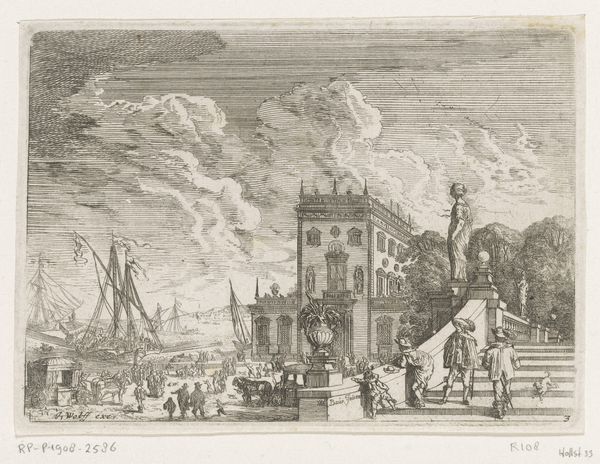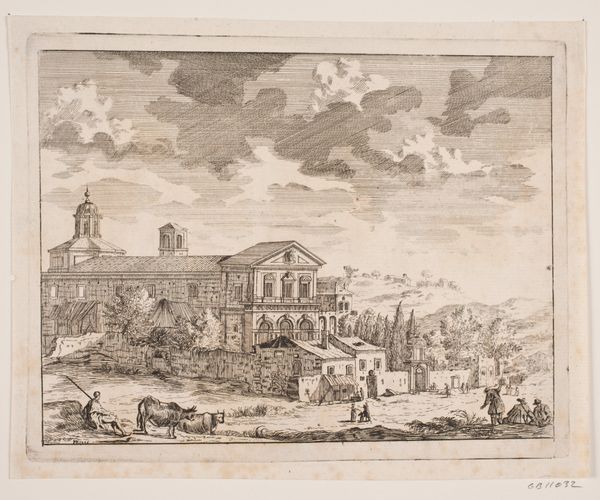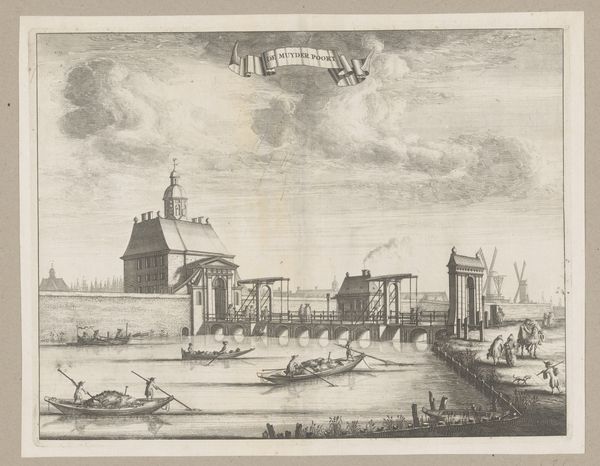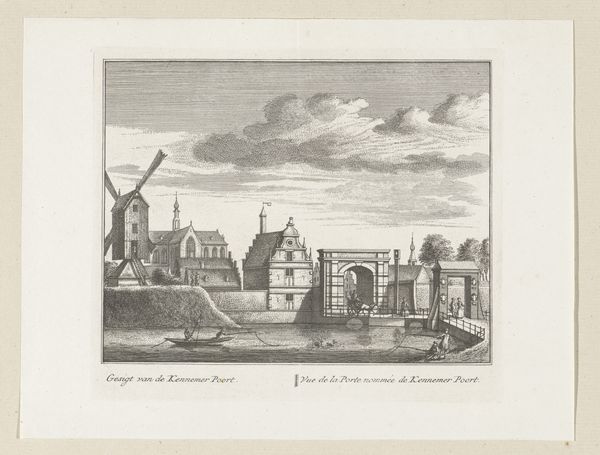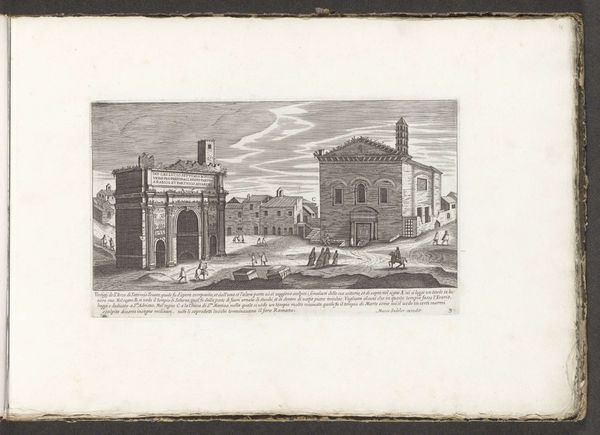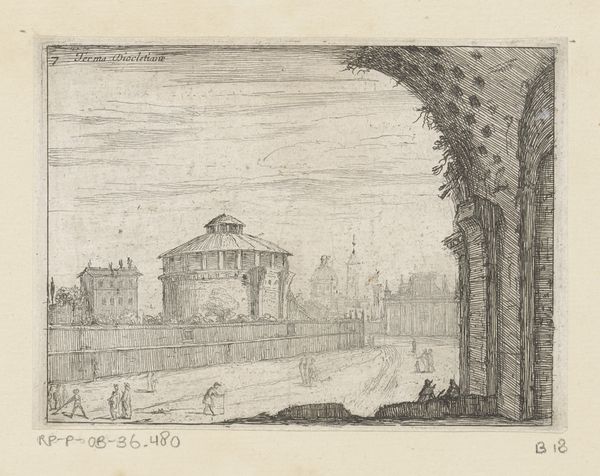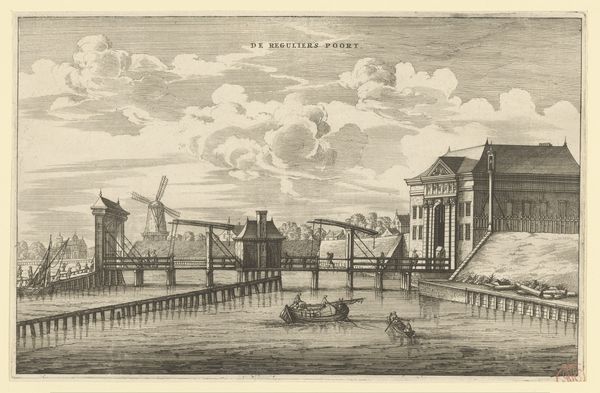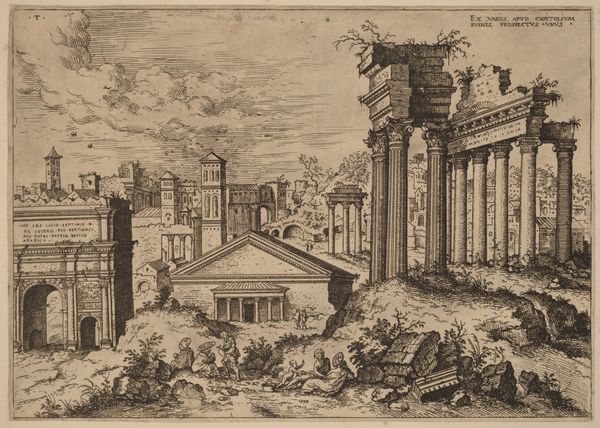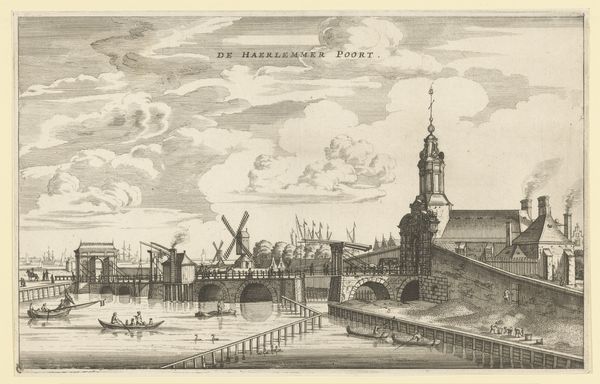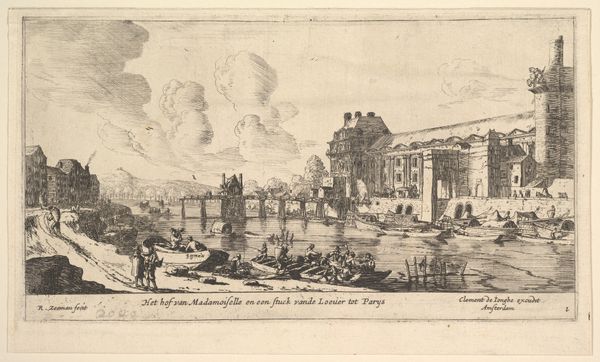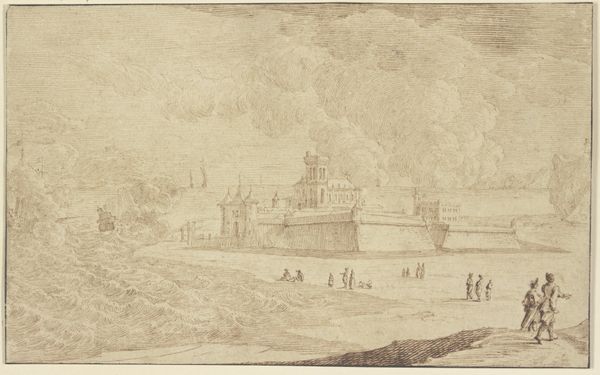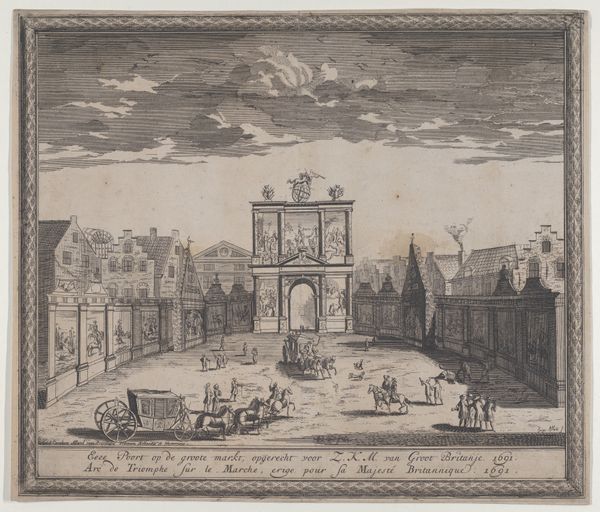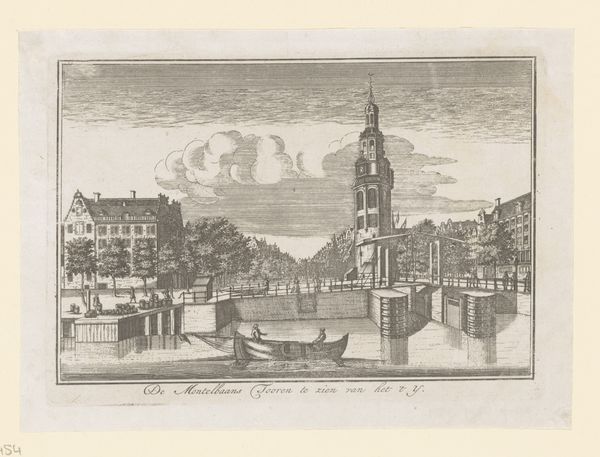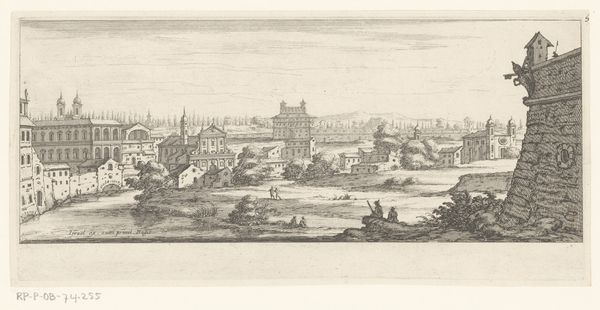
print, intaglio, engraving
#
landscape illustration sketch
#
baroque
#
dutch-golden-age
# print
#
intaglio
#
old engraving style
#
landscape
#
cityscape
#
engraving
Dimensions: height 268 mm, width 348 mm
Copyright: Rijks Museum: Open Domain
Editor: Here we have an engraving from around 1693-1694, "Gezicht op de Weesperpoort in Amsterdam," found in the Rijksmuseum. It depicts a city gate, and the intricate detail is striking, like a photograph etched in metal. What symbolic significance do you see in an image like this, Curator? Curator: It's a fascinating question! Notice how the gate itself dominates the image. Gates, in general, symbolize transitions, passages from one state to another, the known to the unknown. Now, consider this gate specifically: it’s the Weesperpoort, a point of entry into Amsterdam. It represents not just physical entry but also the values, culture, and societal structures within. How does the artist emphasize this sense of 'entering into'? Editor: Well, there are people actively crossing the bridge into the city. Also the banner with "De Weesper Poort" written on it makes the entrance a spectacle. The artist directs your gaze there, definitely. It looks like they're entering a safe haven. Curator: Precisely. Think about Amsterdam's history as a booming trade center during the Dutch Golden Age. The Weesperpoort becomes a symbol of opportunity, prosperity, and a well-ordered society. What do you think the artist conveys through that very prominent cloud looming over the city? Editor: I didn't notice that immediately...it is imposing! Does that add a layer of... uncertainty? Curator: Perhaps a suggestion of the transient nature of prosperity, or the ever-present potential for change. It acknowledges that even within the walls of a prosperous city, life remains complex. Editor: So the image acts almost like a visual time capsule. Curator: Indeed. By understanding the symbolic language of the era, we unlock a deeper understanding of the cultural memory embedded within this cityscape.
Comments
No comments
Be the first to comment and join the conversation on the ultimate creative platform.
